Twice the target of Russian attacks: What we know about Transfiguration Cathedral in Odesa
- Oops!Something went wrong.Please try again later.
Russian forces attacked Odesa on the night of 22-23 July, inflicting grave damage on the city’s historic centre. The Odesa Oblast Military Administration reported that one civilian was killed and 22, including four children, were injured in the attack.
The Transfiguration Cathedral, the House of Scientists, Zhvanetsky Boulevard, residential buildings and port infrastructure sustained damage.
Ukrainska Pravda put together some information about the cathedral beloved by Odesa residents that last night was targeted by Russian attacks for the second time.
Construction of the Transfiguration Cathedral began 200 years ago
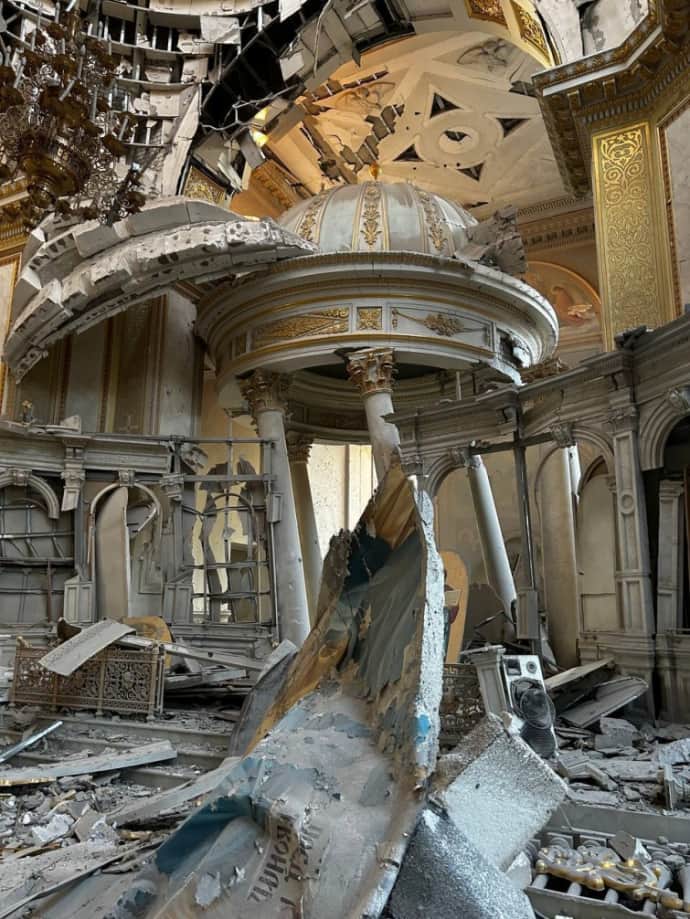
On 23 July, a Russian missile hit the Transfiguration Cathedral in Odesa
The Transfiguration Cathedral on Soborna Square is the biggest Orthodox church in Odesa. According to the Ukrainian Orthodox Church (UOC) diocese, its construction began 228 years ago to celebrate Saint Nicholas the Wonderworker.
"In August 1794, the city of Odesa was consecrated; as part of the consecration, a site where the church of Saint Nicholas the Wonderworker would be constructed was blessed. In 1795, the first stone was laid," the diocese’s website says.
Architect and military engineer Vincent Vanresant was chosen to design the building. The construction began in 1803, after the Duke de Richelieu became the mayor of Odesa.
The church was consecrated on 25 May 1809.
In 1825, the plans for a new bell tower, designed by the Italian Giovanni Frapolli, were approved. In 1841, the architect Deolaus-Heinrich Heidenreich designed the refectory, which combined the bell tower and the old church.
In the late 19th century, parts of the cathedral were renovated, and in 1894 the entire building underwent an extensive renovation.
The Transfiguration Cathedral is a Classicist architectural monument.
Bolsheviks destroyed the Transfiguration Cathedral 90 years ago
Last night was not the first time Russian occupation forces attempted to lay waste to the Odesa cathedral; they have already done it once nearly 90 years ago.
On 2 March 1932, the Bolsheviks locked the church up. In 1936, they detonated explosives in the cathedral’s bell tower and its main building – but only after looting it.
When the Soviet occupation of Ukraine ended, Ukrainian experts found the church’s original foundation during archeological excavation. In 1999, the Cabinet of Ministers (the Ukrainian government – ed.) included the Odesa cathedral in the Program for the Restoration of Outstanding Lost Monuments of History and Culture of Ukraine.
The Transfiguration Church was rebuilt during 2000-2005, and on 6 January 2005, the lower church was consecrated in honour of St Innocent of Odesa.
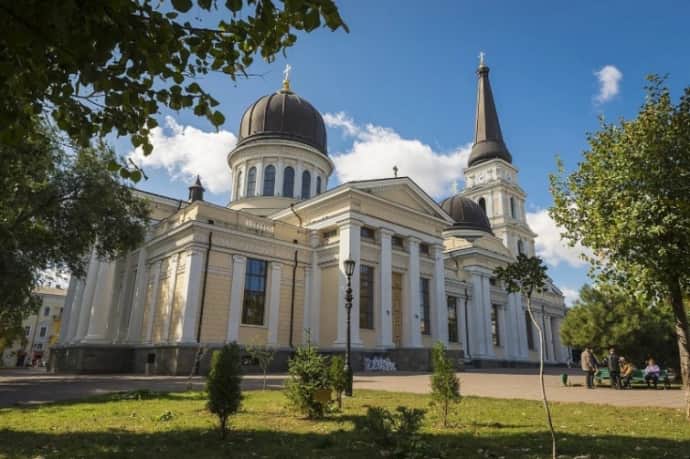
Photo: Konstantin Brizhnichenko/Wikipedia
In 2010, Patriarch Kirill of Moscow "blessed" Odesa Transfiguration Cathedral
On 21 June 2010, Kirill Gundyayev, the Patriarch of Moscow and all Russia, the primate of the Russian Orthodox Church, blessed the upper church of the Odesa Transfiguration Cathedral.
The patriarch, Putin’s associate, told Ukrainian people that "no grand walls or golden lustre will save a person unless they themselves become the temple of God". He added that it was "better not to erect churches if one is not living according to God’s laws".
In 2022, Patriarch Kirill blessed the Russian war against Ukraine and praised Russian soldiers who set out to fight against Ukrainian people. In his comments about the war, he often mentioned the "victory over Fascism" and the "defence of the people of Rus" from "the West".
After last night’s missile strike, Archdeacon Andrii Palchuk, a cleric of the Odesa Eparchy of the UOC, recorded a heartfelt video describing the destruction of the cathedral.
"Russian swine hit the cathedral that was raised by all of Odesa. The [missile] hit the altar, obliterating everything there was. The cathedral is no more… Thank you, ‘Russian brothers’... Thank you, Your Holiness, for striking Metropolitan Agathangel’s very heart. The Virgin Mary will not forgive you for this," Palchuk said.
The UOC press service added that the church condemns Russia’s aggression.
"The UOC’s Odesa Eparchy once again condemns the Russian Federation’s aggression against Ukraine and its terrorist attack on Odesa’s major shrine and its spiritual heart, the Transfiguration Cathedral, which has no connection to military facilities, but has civilians living in its vicinity," the eparchy’s website says.
Transfiguration Cathedral becomes a UNESCO World Heritage site
In 2023, the Transfiguration Cathedral and the rest of Odesa’s historic city centre were included in the UNESCO World Heritage List.
UNESCO has "strongly condemn[ed]" the Russian missile strike on Odesa.
"Further to the statement made by the UN Secretary-General, UNESCO condemns the Russian attack in the buffer zone of the World Heritage property ‘The Historic Centre of Odesa’, affecting buildings of cultural significance within the property," a statement issued by UNESCO reads.
Russian missile hit the altar
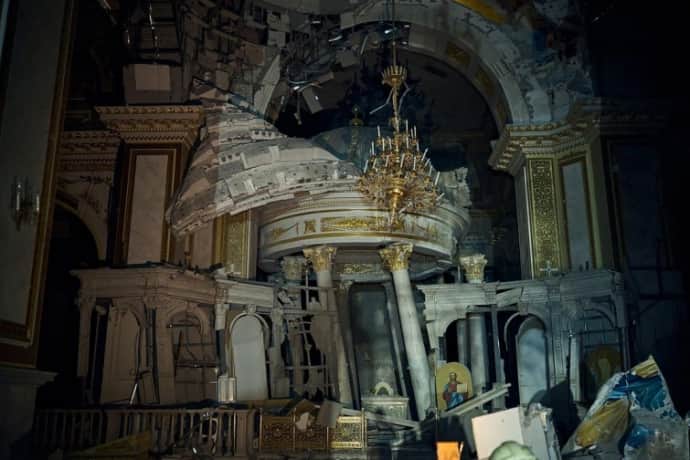
The destroyed altar in the Transfiguration Cathedral
Photo: Kostiantyn and Vlada Liberov/libkos
The Odesa Eparchy of the UOC has reported that the Russian missile hit the cathedral’s central altar, partially destroying the building.
The Russians destroyed the ceilings of the cathedral’s three lower floors, severely damaged interior decoration and icons and completely destroyed service premises in the lower part of the cathedral.
A security guard and a seminarian were in the cathedral during the missile strike. They survived, but the security guard was injured.
Orthodox shrines were also damaged: the Kasperovskaya Icon of the Mother of God, considered the patron saint of Odesa, was retrieved from the rubble.
The cathedral was a tourist favourite
The Transfiguration Cathedral was a famous tourist attraction.
On social media, Ukrainians have been sharing memories from their visits and pictures of the cathedral before and after the Russian missile strike.
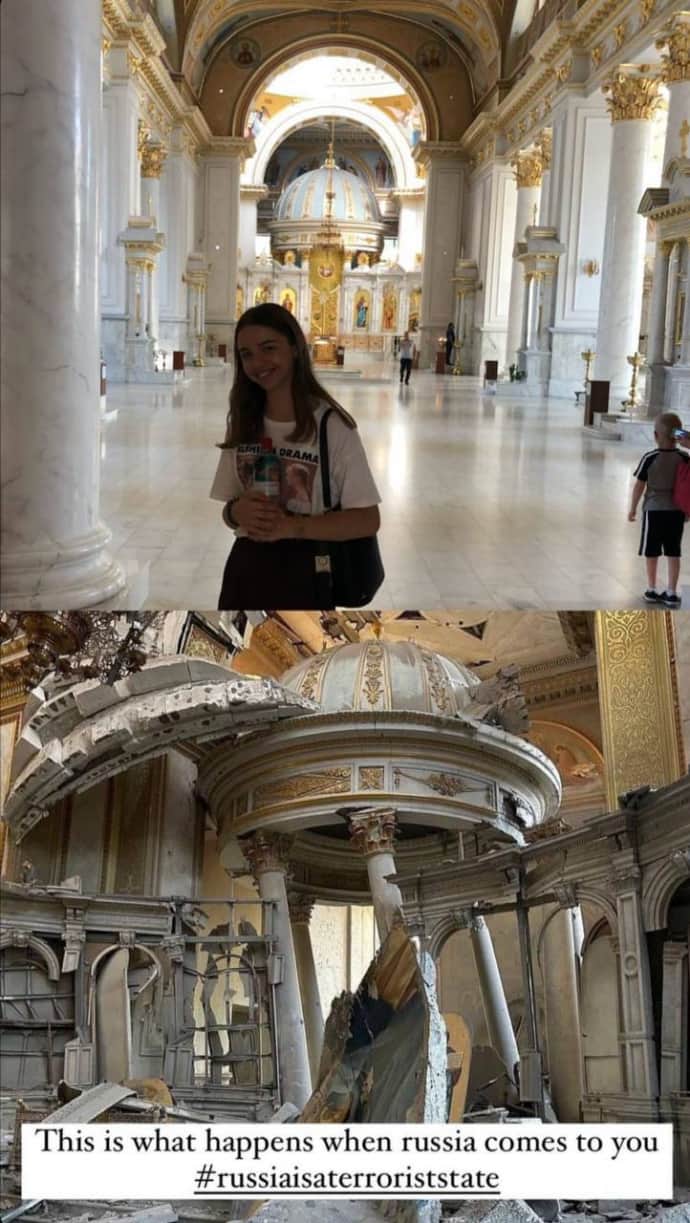
Photo: nastia_haioshko
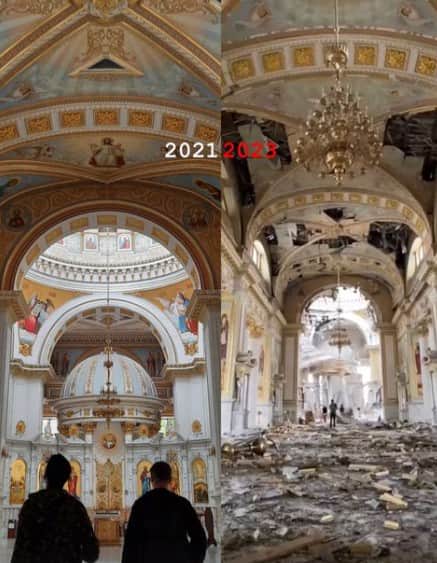
Photo: groz.va, pani_margo
Journalists fight on their own frontline. Support Ukrainska Pravda or become our patron!

